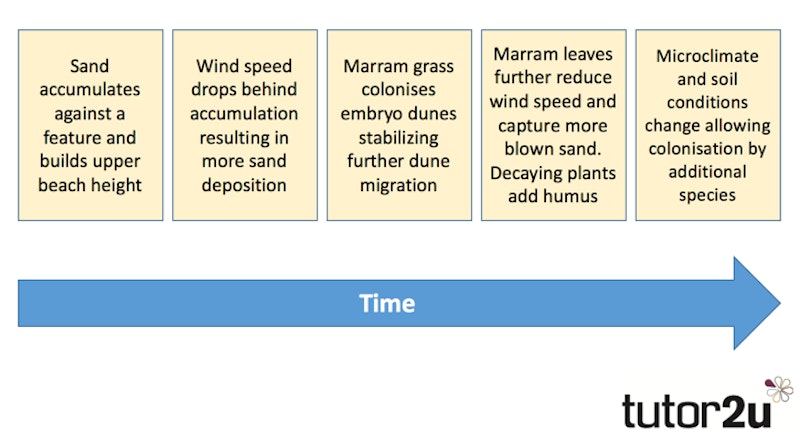Study Notes
Coastal Systems - Factors Involved in Sand Dune Formation
- Level:
- AS, A-Level
- Board:
- AQA, Edexcel, OCR, IB, Eduqas, WJEC
Last updated 22 Mar 2021
This study notes explores the key factors involved in sand dune formation.
Introduction
Depositional features at the coast may be temporary (beach cusps) or longer-lasting (spits), but others are transformational; they undergo change from one form to another over relative short periods of time measured in decades.
Environmental habitats
at the coast alter as a result of plant succession, which cause changes to
micro-climate features and soil states, and which – in turn – create more
favourable conditions for new plant species to colonise a section of shoreline.
Sand dune development
Sand dunes are more likely to develop behind an active beach zone where:
- The gradient of the ground inland adjacent to a beach is relatively flat.
- Strong onshore winds provide the energy input to move sand inland from a beach.
- A beach is composed of fine sand particles rather than shingle, pebbles or rocks.
- A large area of beach is exposed at low tide.
As dry sand grains are blown inland by saltation (series of bounces) and rolling over the surface they are likely to accumulate against natural or human obstacles. Marram grass, being tolerant of very sandy conditions often colonises upper beach zones and begins to stabilize sand movement in a positive feedback cycle that accentuates the initial change:
